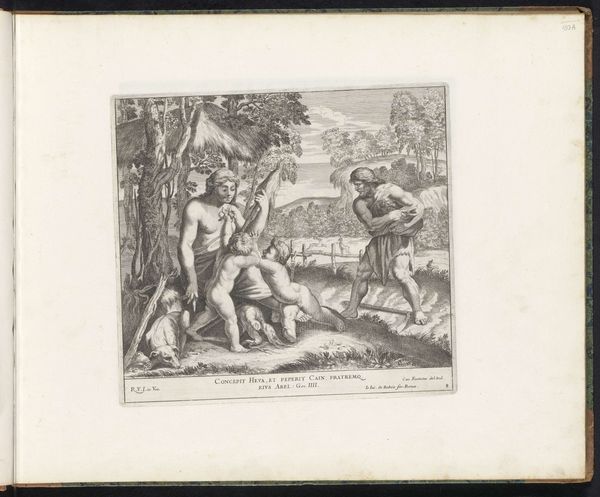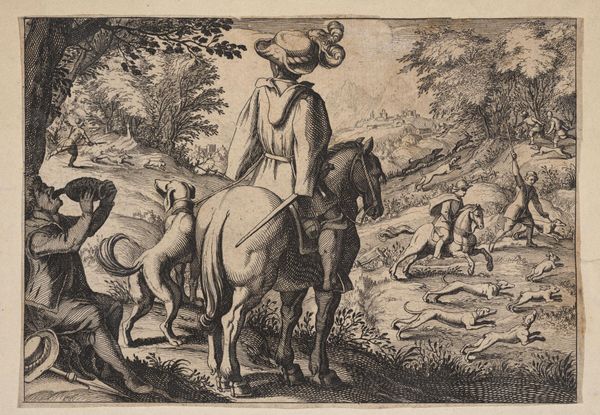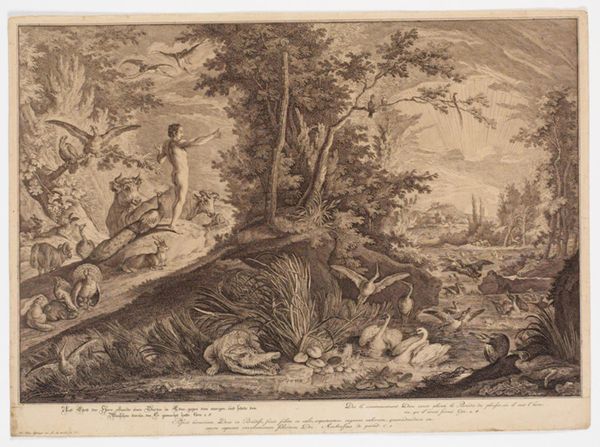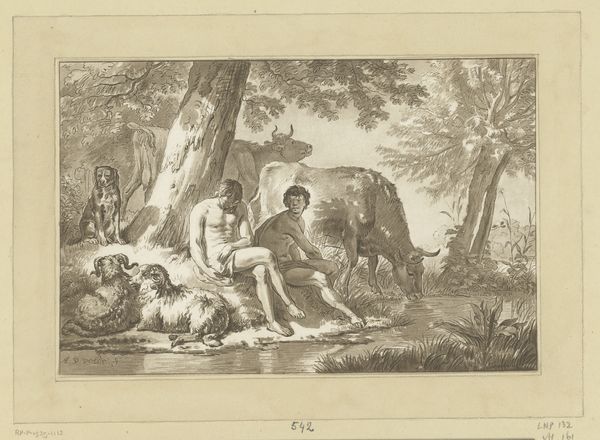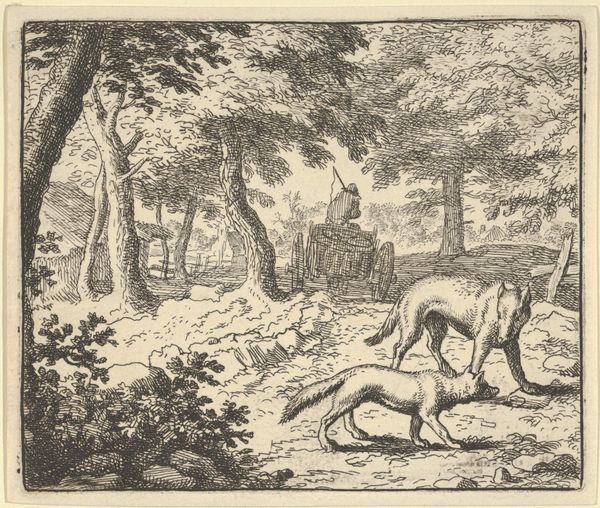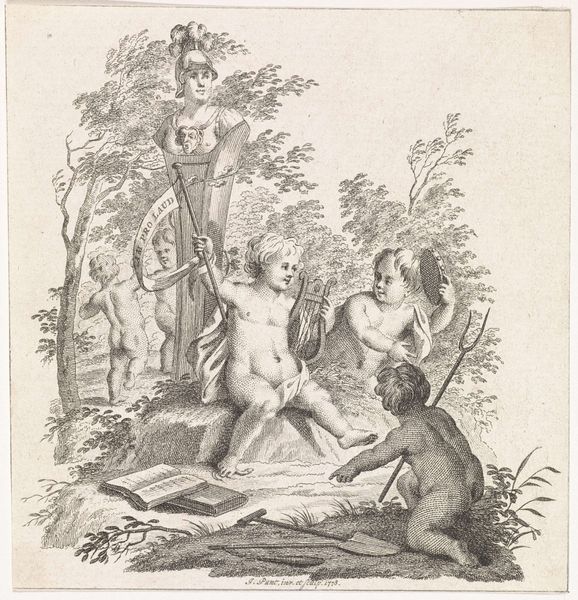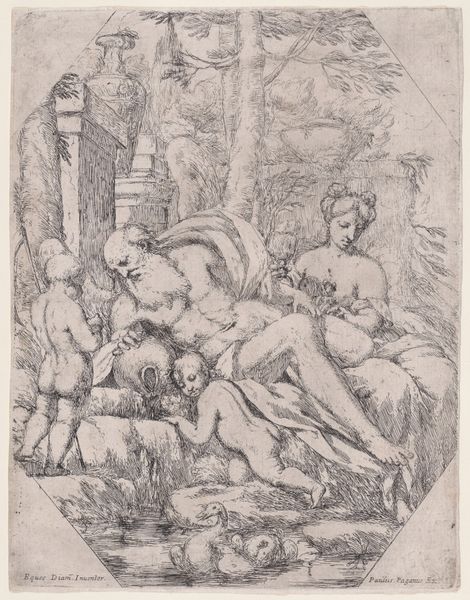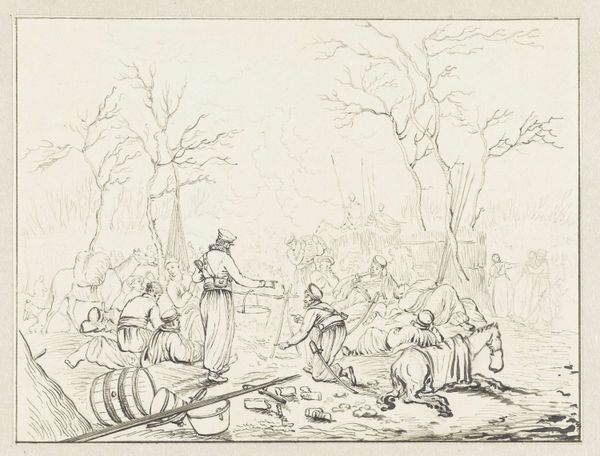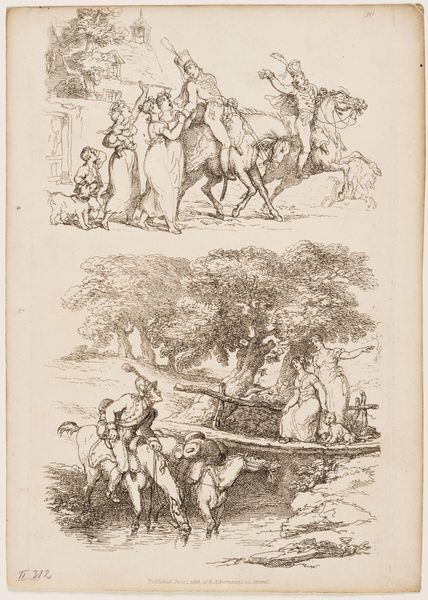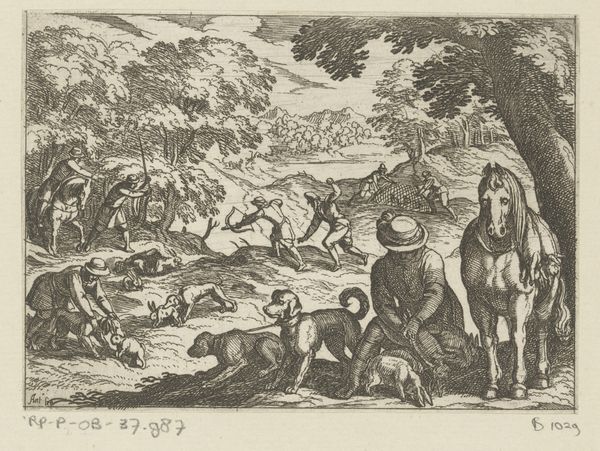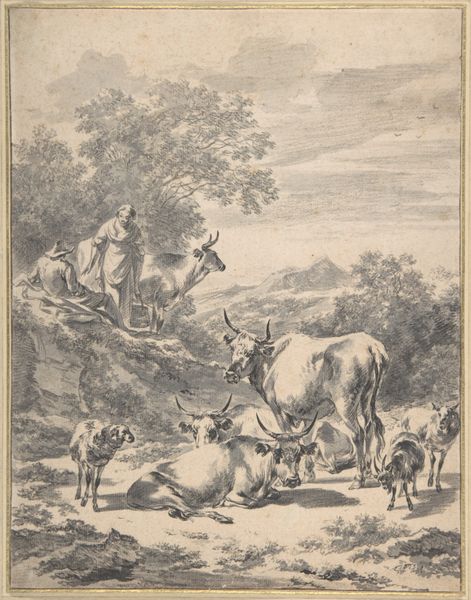
drawing, ink, pen
#
drawing
#
baroque
#
landscape
#
figuration
#
ink
#
coloured pencil
#
pen
#
genre-painting
Dimensions: height 162 mm, width 209 mm
Copyright: Rijks Museum: Open Domain
Curator: This delicate drawing, rendered in pen and ink, is titled "Rustende jager met honden en jachtbuit" – A Resting Hunter with Hounds and Game – and was created by Adriaen de Gryef sometime between 1680 and 1715. Editor: My first impression is… exhaustion. Not just of the hunter slumped beneath that tree, but a certain weariness within the entire scene itself. Curator: It's interesting you say that. Gryef, as a Baroque artist, was working within a hierarchical society that celebrated the aristocracy and their relationship with nature – specifically their right to hunt on the land. Editor: But this isn’t celebratory; the image doesn't romanticize that privilege, does it? There's no sense of triumph here. The game lies lifeless, almost discarded. The dogs seem more resigned than attentive. The symbolism of dominance seems… flat. Curator: Perhaps because genre paintings often implicitly critique societal norms. The hunter’s weary pose could be interpreted as a commentary on the burdens, not the joys, of maintaining social status. Consider, too, that this was created during a period of significant social change; perhaps it is a subtle questioning of the old order. Editor: I'm drawn to the repetition of rounded shapes—the hunter's hat, the curve of the dogs’ bodies, even the carcasses form circles, and circles often signify… stagnation, cycles going nowhere. Is Gryef hinting at the futility of this aristocratic pursuit? Curator: Certainly, a feminist perspective could explore the way women in particular were excluded from hunting, symbolic of their lack of access to resources and power within this historical moment. Editor: It’s compelling how even a seemingly straightforward genre scene opens itself up to such diverse readings. Curator: Absolutely, and these dialogues are important in enriching our appreciation for even the most seemingly traditional pieces of art. Editor: Indeed. We’ve taken the image of a resting hunter, seen fatigue but also hints of deep, societal unease within the iconography. It feels much more contemporary than its age would suggest.
Comments
No comments
Be the first to comment and join the conversation on the ultimate creative platform.
